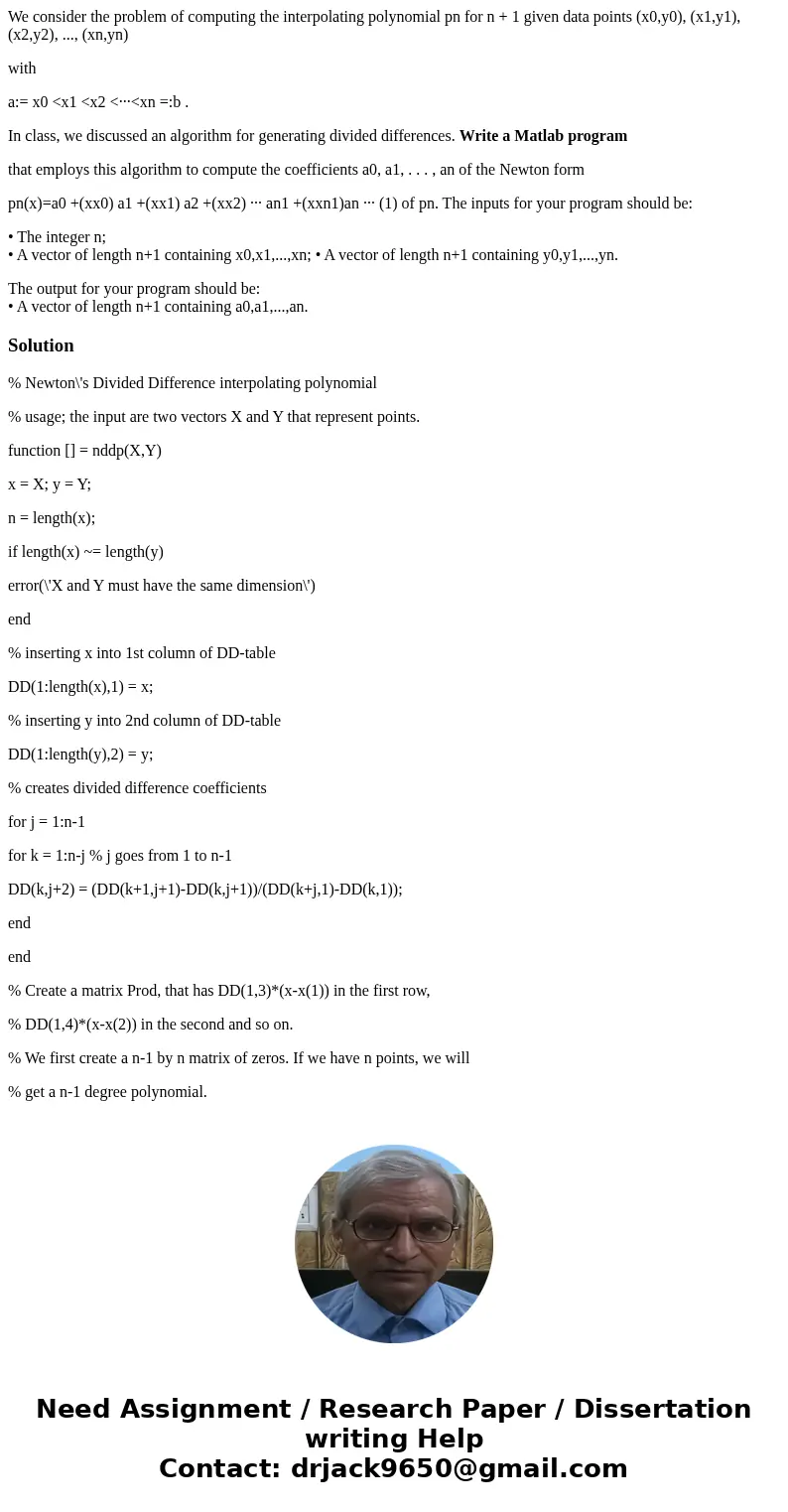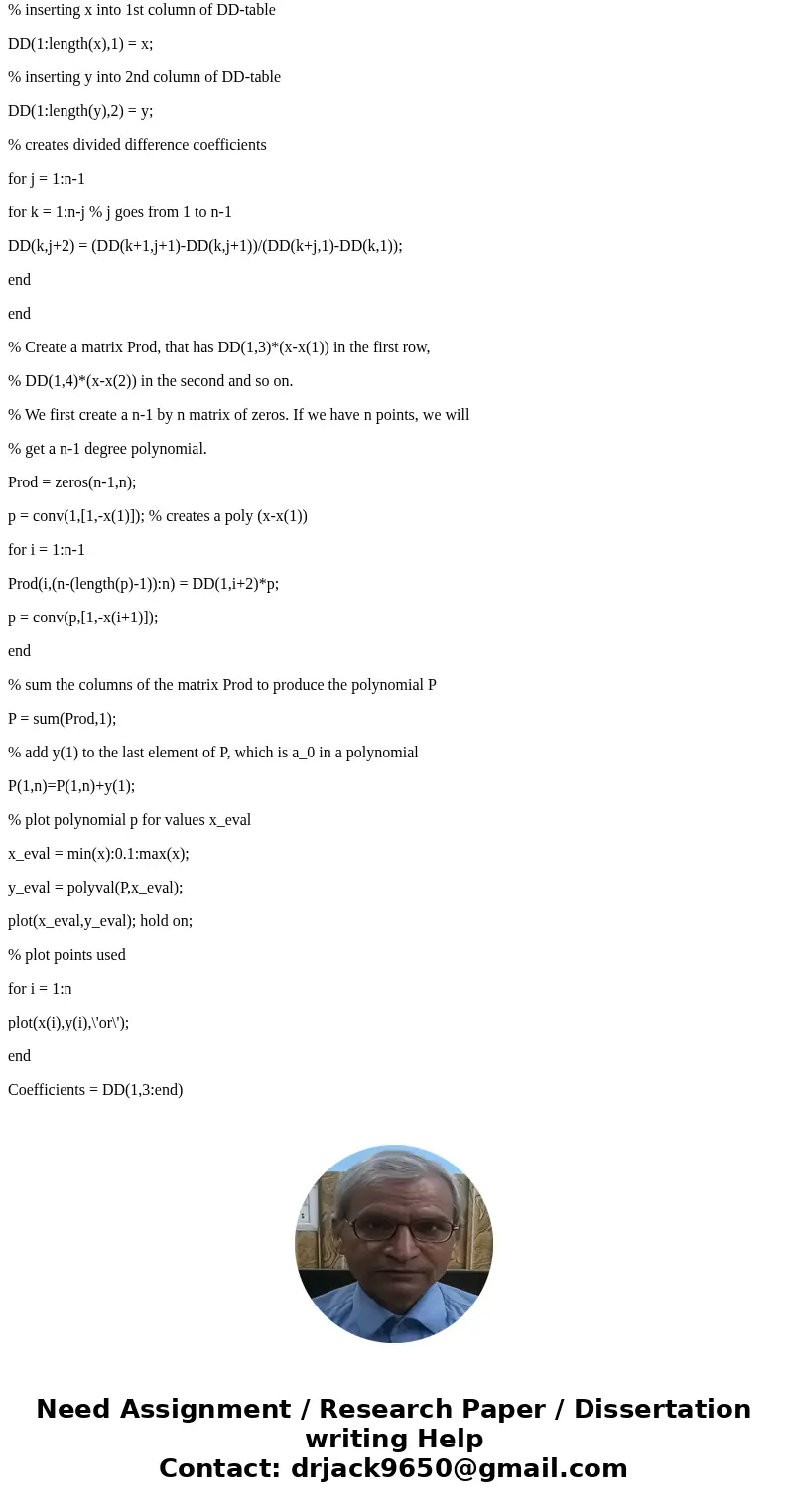We consider the problem of computing the interpolating polyn
We consider the problem of computing the interpolating polynomial pn for n + 1 given data points (x0,y0), (x1,y1), (x2,y2), ..., (xn,yn)
with
a:= x0 <x1 <x2 <···<xn =:b .
In class, we discussed an algorithm for generating divided differences. Write a Matlab program
that employs this algorithm to compute the coefficients a0, a1, . . . , an of the Newton form
pn(x)=a0 +(xx0) a1 +(xx1) a2 +(xx2) ··· an1 +(xxn1)an ··· (1) of pn. The inputs for your program should be:
• The integer n;
• A vector of length n+1 containing x0,x1,...,xn; • A vector of length n+1 containing y0,y1,...,yn.
The output for your program should be:
• A vector of length n+1 containing a0,a1,...,an.
Solution
% Newton\'s Divided Difference interpolating polynomial
% usage; the input are two vectors X and Y that represent points.
function [] = nddp(X,Y)
x = X; y = Y;
n = length(x);
if length(x) ~= length(y)
error(\'X and Y must have the same dimension\')
end
% inserting x into 1st column of DD-table
DD(1:length(x),1) = x;
% inserting y into 2nd column of DD-table
DD(1:length(y),2) = y;
% creates divided difference coefficients
for j = 1:n-1
for k = 1:n-j % j goes from 1 to n-1
DD(k,j+2) = (DD(k+1,j+1)-DD(k,j+1))/(DD(k+j,1)-DD(k,1));
end
end
% Create a matrix Prod, that has DD(1,3)*(x-x(1)) in the first row,
% DD(1,4)*(x-x(2)) in the second and so on.
% We first create a n-1 by n matrix of zeros. If we have n points, we will
% get a n-1 degree polynomial.
Prod = zeros(n-1,n);
p = conv(1,[1,-x(1)]); % creates a poly (x-x(1))
for i = 1:n-1
Prod(i,(n-(length(p)-1)):n) = DD(1,i+2)*p;
p = conv(p,[1,-x(i+1)]);
end
% sum the columns of the matrix Prod to produce the polynomial P
P = sum(Prod,1);
% add y(1) to the last element of P, which is a_0 in a polynomial
P(1,n)=P(1,n)+y(1);
% plot polynomial p for values x_eval
x_eval = min(x):0.1:max(x);
y_eval = polyval(P,x_eval);
plot(x_eval,y_eval); hold on;
% plot points used
for i = 1:n
plot(x(i),y(i),\'or\');
end
Coefficients = DD(1,3:end)


 Homework Sourse
Homework Sourse